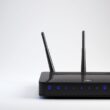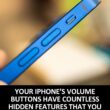You’ve captured some incredible photos on your iPhone and want to transfer them to your mac so that you can enjoy them on a larger screen. The iPhone is successfully synced with the PC, but you get an error message that reads, “A device attached to the system is not functioning.”
What is the significance of this message? A connectivity problem exists between the PC and an iPhone connected, and Windows considers the device not accessible. Various factors might have contributed to the error, but be assured that it is a typical problem that you can resolve in just a few clicks.
This point-by-point guide will explain what to do if you see this error.
How to resolve the “A Device Attached to the System Is Not Functioning” error on your iPhone?
If you see this error message, it means that your computer and iPhone are not communicating properly. This might be due to a variety of factors:
- It is possible that your iPhone is not properly connected to your PC.
- You may have a problem with your computer’s USB port.
- A faulty USB cord might cause the problem.
You may get this error when you try to copy and transfer photos and videos from your iPhone to your Windows PC.
First, try the actions outlined below:
1. Reconnect your iPhone to your computer if it has been disconnected. Change the USB port and see if that helps. Try using a different USB cable.
2. Restart your computer as well as your iPhone to complete the process. Going to Settings > General > Shut Down will allow you to turn off your iPhone. Then you’ll be able to start again. Restart your computer as well.
3. Switch between the USB 2.0 and USB 3.0 ports on your computer to see what happens.
4. On your computer, make sure that iTunes is up to date with the latest version. Depending on how your system was initially configured, there are two options for doing this:
- For those who downloaded iTunes directly from Apple’s website, go to Help > Check for Updates in iTunes and follow the instructions.
- For those who have downloaded iTunes from the Microsoft Store and want to access it from their PC, go to Start > Microsoft Store > More… > Download and Updates and follow the on-screen instructions.
Free up some space on your iPhone
A shortage of storage on the iOS device is a typical reason for this error message while converting HEIF/HEVC images and movies. Therefore, we highly advise you to check the storage space available on your iPhone before proceeding to the other methods mentioned below. To do so, go to Settings > General > iPhone Storage on your device.
![How to fix "A Device Attached to the System Is Not Functioning" Error [iPhone] 5 Free up some space on your iPhone](https://www.digitub.org/wp-content/uploads/2021/12/Free-up-some-space-on-your-iPhone-795x1024.jpg)
Reset location and privacy
It is necessary to initially trust the computer when connecting your iPhone to a computer for the first time. The error “A device attached to the system is not functioning properly” may appear in various situations. For example, if you clicked “No.” Or something went wrong. In this case, the only option is to start again from scratch.
To do so, first, unplug your iPhone from your computer, then navigate to Settings -> General-> Transfer or Reset iPhone and choose Reset location and privacy from the drop-down menu. You’ll be prompted to enter your passcode at this point.
![How to fix "A Device Attached to the System Is Not Functioning" Error [iPhone] 6 Reset location and privacy](https://www.digitub.org/wp-content/uploads/2021/12/Reset-location-and-privacy-474x1024.jpg)
Transfer Images in their Original Format
It is also possible to get around the “A device attached to the system is not functioning” message by transferring the images and videos in their original format, which is a straightforward hack. Are you curious about what it means? Transferring the photographs in their original format prevents conversion and ensures that Windows itself receives the digital data in the HEVC or HEIF format. What you need to do is as follows.
- Open the Photos app on your iPhone by going to Settings > Photos.
- Select the “Keep Originals” option under “Transfer to Mac or PC.”
All Good?
By now, you should have found a solution to the problem. If improper file conversions caused the issue, adjusting transfer parameters should resolve the issue temporarily – at least until a future update permanently fixes the problem.
Many individuals have reported success with changing USB ports or upgrading device drivers as a workaround for this problem over the years.



